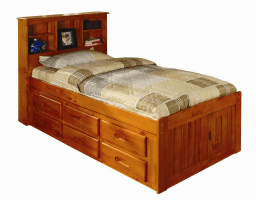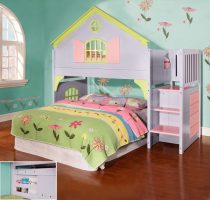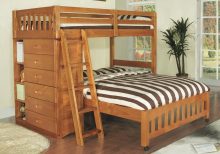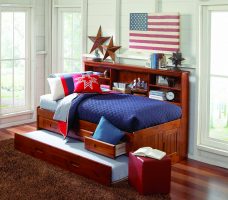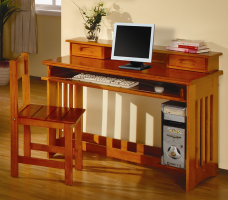Montessori Kids’ Bedroom Furniture
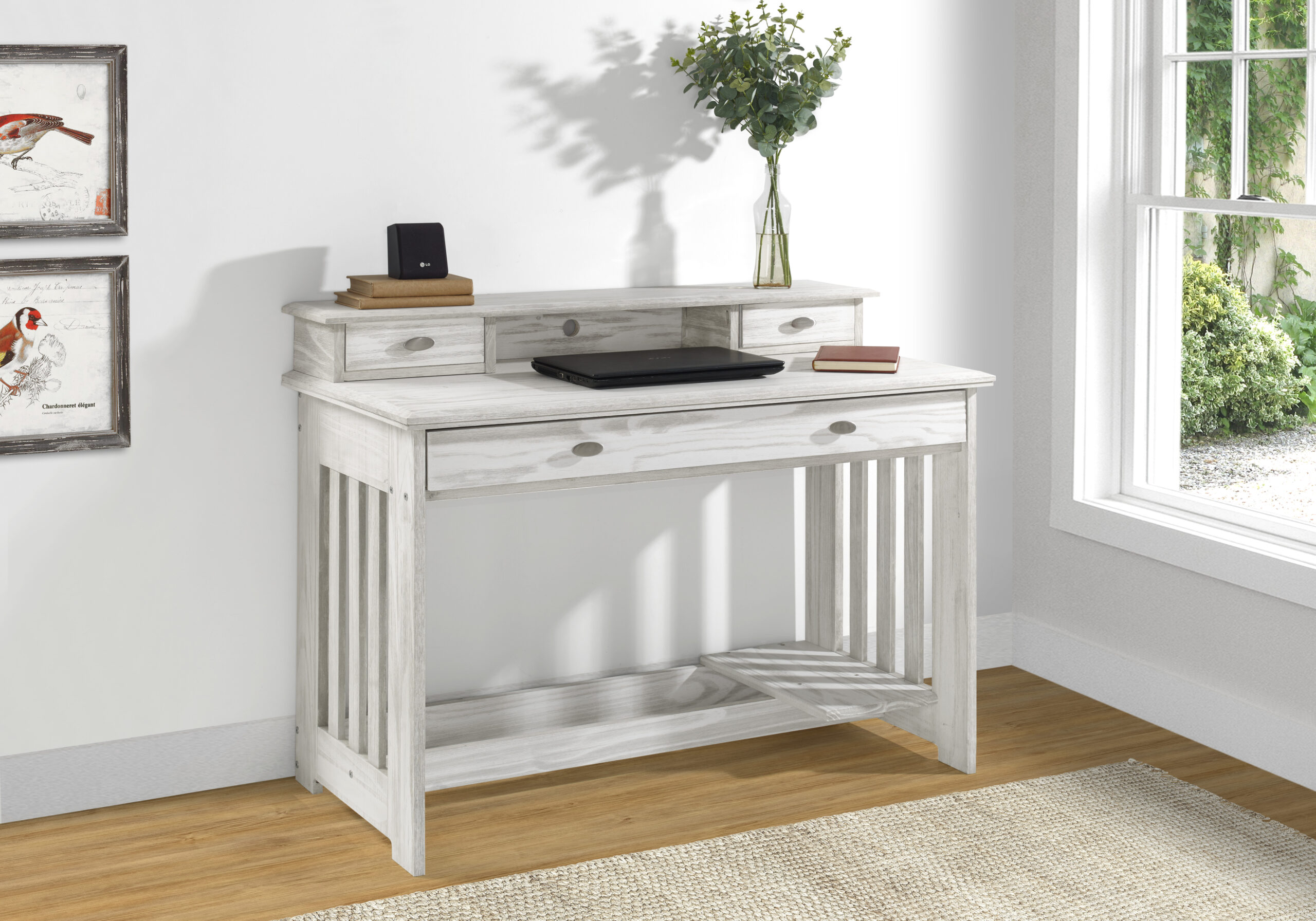
Designing a children’s bedroom is a unique opportunity to create a space that not only nurtures their growth but also aligns with educational philosophies like Montessori. The Montessori approach emphasizes independence, self-directed learning, and respect for the child’s individuality. In this article, we’ll explore the principles of Montessori education and how Montessori kids’ bedroom furniture can be incorporated into kids’ bedroom furniture to foster independence and holistic development.
Montessori Education: A Brief Overview
The Montessori method, developed by Dr. Maria Montessori in the early 20th century, is an educational approach that centers around the child’s natural curiosity and desire to learn. It recognizes that children are active participants in their own education and emphasizes the following principles:
Child-Centered Learning: Montessori education values the child’s innate ability to explore, discover, and learn at their own pace.
Independence: It promotes independence and self-sufficiency, allowing children to make choices and decisions within a structured environment.
Order and Organization: A well-organized environment supports learning and helps children develop a sense of order and responsibility.
Sensory Learning: The use of hands-on, sensory materials is a fundamental aspect of Montessori education, engaging children’s senses and enhancing their understanding of concepts.
Respect for the Child: Montessori educators respect each child as an individual with unique needs, interests, and abilities.
Incorporating Montessori Principles in Kids’ Bedroom Furniture

Low Bed Frames: In Montessori, low bed frames are favored because they allow children to easily get in and out of bed on their own, promoting independence. Low beds also reduce the risk of injury from falls.
Accessible Storage: Incorporate child-friendly storage solutions at the child’s eye level. Open shelves, low bookcases, and accessible drawers allow children to select and return their toys and belongings independently.
Child-Sized Furniture: Use child-sized furniture, including chairs, tables, and desks, to empower children to engage in activities comfortably. This promotes a sense of ownership over their space.
Minimalistic Design: Montessori-inspired bedrooms often feature minimalistic design elements. A clutter-free environment fosters concentration and organization, allowing children to focus on their activities.
Natural Materials: Choose furniture made from natural, non-toxic materials like wood. These materials are durable, safe, and promote a connection to the natural world.
Functional Spaces: Create distinct functional areas within the room, such as a reading nook, play area, and quiet corner. Each space should be designed to cater to specific activities, encouraging autonomy.
Child-Accessible Hooks and Pegs: Install hooks and pegs at a child’s height for hanging up clothing, bags, or art supplies. This promotes responsibility for keeping the space tidy.
Open-Floor Space: Leave open-floor space for movement and play. Children can spread out, engage in physical activities, or work on projects without feeling confined.
Display Child’s Artwork: Dedicate a wall or board for displaying the child’s artwork. Encouraging self-expression and creativity is a key aspect of Montessori principles.
Child-Friendly Lighting: Choose adjustable, child-friendly lighting that allows children to control the brightness of their space, fostering a sense of ownership.
Accessible Mirrors: Install child-safe, full-length mirrors at a child’s height. Mirrors encourage self-awareness and independence, as children can dress themselves and check their appearance.
Child-Accessible Closet: If possible, design a child-accessible closet with lower rods and shelves, making it easy for them to choose their own clothing and accessories.
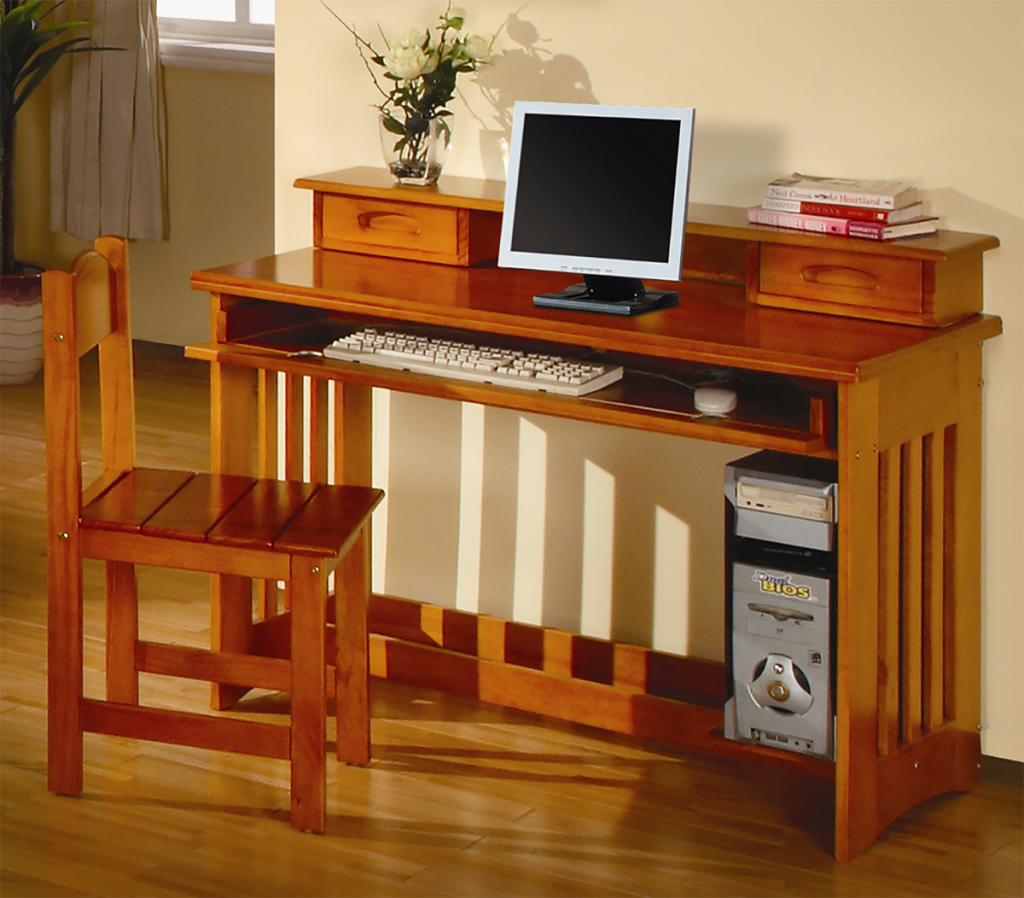
Benefits of Montessori-Inspired Kids’ Bedroom Furniture
Incorporating Montessori principles into your child’s bedroom furniture offers numerous benefits:
Independence: Children develop a sense of autonomy and confidence as they learn to navigate and organize their space independently.
Responsibility: Montessori-inspired furniture encourages responsibility for one’s belongings and environment, teaching children valuable life skills.
Creativity: An organized, clutter-free space allows children to explore and engage in creative activities more effectively.
Self-Directed Learning: Child-friendly furniture and accessible materials enable self-directed learning and exploration, aligning with the Montessori philosophy.
Safety: Low bed frames and child-friendly storage solutions promote safety, reducing the risk of accidents and injuries.
Comfort: Child-sized furniture ensures comfort and accessibility, making it easier for children to engage in various activities comfortably.
Order and Organization: A well-structured environment encourages order and organization, supporting concentration and focus.
Environmental Consciousness: Montessori-inspired furniture often uses natural and sustainable materials, promoting environmental consciousness in children.
***
Designing a Montessori-inspired kids’ bedroom is a thoughtful and holistic approach to creating a space that nurtures a child’s independence, creativity, and personal growth. By incorporating principles such as low bed frames, accessible storage, child-sized furniture, and natural materials, you can provide an environment that aligns with the Montessori philosophy.
Ultimately, a Montessori-inspired bedroom isn’t just about aesthetics; it’s about empowering children to become self-motivated, responsible, and confident individuals who actively engage in their own learning and development.

